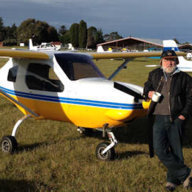I suppose having 4/6 gauges for EGT/CHT is a good idea. Someone should tell the factory .....
J200 #1 was built by the NZ Jab agent at the time. It has a single CHT and a single EGT gauge. The new owner is fitting 6x6 stuff to see if he can avoid repeating the head crush he found at 400 hours.
I just bought it and flew it the same way I had flown the Cessna I owned beforehand. One temp gauge seems to be considered enough on Lycs and Contis. Noone (including my mate the Jab agent) told me I needed 12 temperature measurements to avoid cooking the engine.
Pioneer 300 #2 just had one of each. At 600 hours it was cooked too. To be fair, the cowling was not the best.
Jab 230 #3 had single gauges - the owner bought the kit from Jabiru and built it as per instructions and flew it.
Jab 160 #4 is a factory-built 160C. It came with one CHT gauge and no EGT gauge.
Go figure.
None of the 912 powered aircraft ( Zenair, Sky Arrow, Sting, Avid, Gazelle) have 4x4 temperature reporting. That's water-cooled heads for you I suppose. One of them is at 1500 hrs TTIS and still has 80/78 leakdowns. The others are younger.
I was there - none of this is hearsay. I freely admit this is a small sample.




